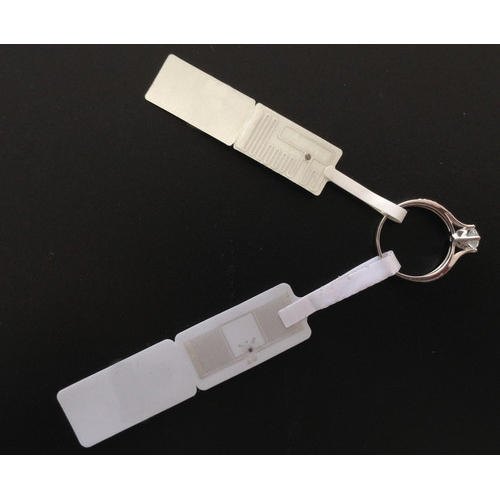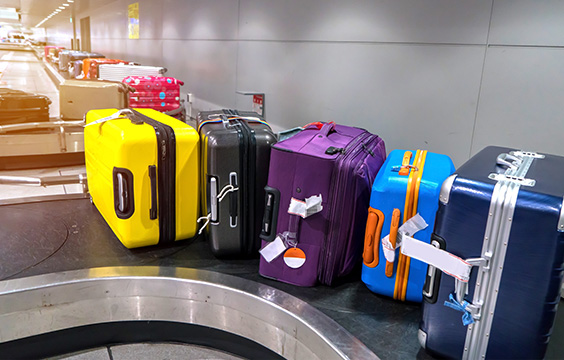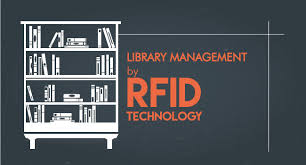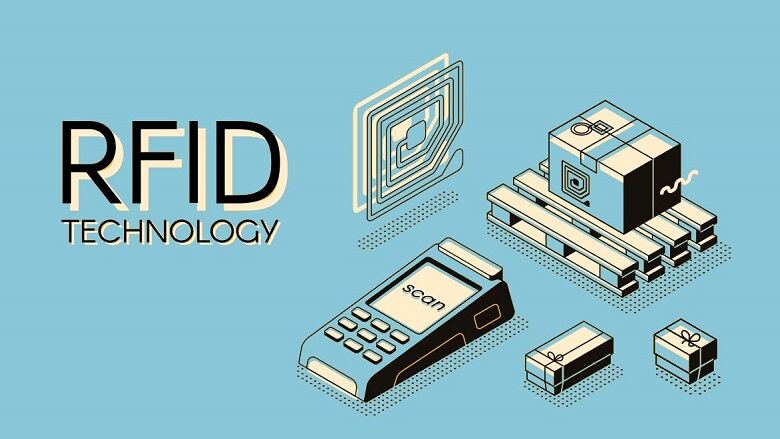 Call at :
+86 18681515767
Call at :
+86 18681515767
 Email :
marketing@jtspeedwork.com
Email :
marketing@jtspeedwork.com
 Call at :
+86 18681515767
Call at :
+86 18681515767
 Email :
marketing@jtspeedwork.com
Email :
marketing@jtspeedwork.com

There are two main applications of washing labels, one is the washing of hotel linen, the other is the washing of hospital linen, because the application of the medical field will be analysed separately, so this section We will analyse the application in medical field separately, so this part will only analyse the washing of hotel fabrics. The washing of hotels includes the washing of bed sheets, quilt sheets, pillowcases, towels and other items, because of the high cleaning requirements of such items, hotels will be outsourced to enterprises specialised in washing to carry out cleaning. To carry out cleaning, this brings the problem of asset management and inventory, so this also gave birth to the demand for UHF RFID tags in this industry, of course, for the hotel tenants. Of course, for hotel guests, you can also use RFID tags to understand the hotel's cloth is not in the recent time to have cleaned, in order to be more assured that the stay. To assess the market capacity of UHF RFID tags in the hotel laundry industry, we can analyse the number of hotels and rooms in China. According to statistics, by the end of 2022, there will be 312,700 hotels (15+ rooms) with 16,308,500 rooms. According to our research, the number of UHF RFID tags needed for each hotel room is about 30, and thus the number of laundry tags needed for the entire hotel fabric industry is estimated to be about 4.5-5 billion. According to our research, each hotel room needs about 30 UHF RFID tags. Market Summary There are two main business models for hotel fabric washing, one is the hotel as an investor, purchasing RFID tags to manage its own hotel fabric assets; the other is a third-party fabric leasing company, using RFID tags to manage its own fabric assets. The other is a third-party fabric leasing company, which adopts RFID tags for the purpose of asset management and lease settlement. Wash tags are not disposable consumables, but need to be reused, generally a tag needs to be washed hundreds of times, or even more, and wash tags from the chip to the substrate to the encapsulation. Moreover, the washing label is different from ordinary labels from the chip to the substrate to the package, so the price of washing labels is more expensive, generally costing 1-3 yuan. According to our research information, the annual market shipment of washing labels in China is about 20 million, the market penetration is still relatively low, according to the previous results of our calculations, China's hotels and restaurants. According to the results of our calculations, the total capacity of China's hotel market is about 450-500 million labels, a conservative estimate of the proportion of enterprises capable of investing in labels is about 20%, the entire label market capacity is about 100 million labels. The capacity of the entire label market is about 100 million pieces, and the general fabrics need to be replaced in about 3 years, the iteration speed of the label is also the same, so th...

UHF RFID tags are widely used in the power market, the most typical scenario is that each meter is fitted with RFID tags for management, in addition, the power system maintenance tools, distribution systems and asset management within the power system is very common use. Take the annual new meter data of the State Grid as an example: Market Summary: 1, from the above chart can be found, China's national grid bidding quantity is cyclical, in 2017, at the bottom, only more than 30 million, general meter replacement The general meter replacement cycle is 8 years, so the last few years in the rising period, the normal annual increment of 70-80 million new, but in 2020, because of the epidemic, resulting in the market However, in 2020, because of the epidemic, the market shrinks seriously, plus the number of electricity meter renewal of the Southern Power Grid, it is expected that the number of new meters each year is about 100 million, and each meter generally uses 2-3 RFID tags for different business management. Each meter generally uses 2-3 RFID tags for the management of different businesses, therefore, only one meter, the annual RFID tag market potential is about 200-300 million. 2, in addition to the meter, in recent years, RFID tags in the electric power system for all aspects of the promotion speed is also very rapid, RFID tags popularity and the power system of the various links, according to our research, the RFID tags in the electric power system. According to our research, the annual RFID tag usage of the State Grid + South Grid system has reached about 300 million. 3, the power field for the reader product consumption is relatively large, so the power industry RFID output value is relatively high.

Luxury brands, gold, jewellery, jade, emerald and other valuables because of the high value, consumption, but also has a strong management needs, so more and more jewellery brands use UHF RFID tags to manage, we take the most common daily consumption of gold as an example. Market Summary: 1 2020, due to the impact of the epidemic, resulting in China's gold consumption is much lower, according to the normal year, the annual consumption of 700 tonnes of gold volume, the average weight of each piece of gold jewellery 10 grams to calculate the annual pcs of gold jewellery is about 70 million, plus jadeite, diamonds, luxury brands, and other valuables, the annual consumption of UHF RFID tags in this market has the potential to be consumed by about 20-30 million pcs. 300 million. 2 Luxury goods and jewellery and other valuable markets are now becoming more and more brand concentrated, because of the large value, consumers also have a high demand for anti-counterfeiting authentication, so the market driver is also good. 3 At present, there are many luxury goods and jewellery brands have been piloting the use of UHF RFID, used to do inventory and anti-counterfeiting, so the tags will involve UHF and HF bands.

Airport aviation baggage tag is another more concentrated "consumable" market, the field has the Civil Aviation Administration in the promotion, so, RFID tags in the field in recent years, the speed of landing, especially the annual throughput of more than ten million large airports, most of the RFID baggage tags have been used. In the field of aviation, in addition to baggage, aircraft maintenance tools, aircraft life jackets and other emergency items have begun to popularise RFID tags, although the volume is not as large as baggage, but the performance of the product customization requirements, the value is also relatively high. Because the main shipments are concentrated in the aviation baggage, we can estimate the capacity of the market from the whole of China's airport passengers. 1 In a normal year, total passenger throughput at China's domestic airports is growing steadily at around 100 million passengers per year, and aircraft are becoming an increasingly common means of travel. Aircraft are becoming an increasingly common means of travel. In the last three years, passenger throughput at airports has fallen considerably due to the impact of the epidemic, particularly in 2022, but data for the first few months of 2023 shows that passenger throughput has recovered to a level close to that of 2023. However, data for the first few months of 2023 shows that passenger throughput has recovered to near pre-Epidemic levels. 2 Throughput is counted in terms of person trips, i.e. a person entering or leaving an airport is counted twice, so if we calculate on the basis of a normal year, when there are about 1.4 billion person trips per year, that's about 700 million people travelling by air, and of those people who need to have baggage checked in and out. Which need to have baggage check-in before using RFID tags, it is expected that 50% of the proportion of the need to check-in baggage, so the entire domestic airport baggage tag annual consumption of about 300-400 million, of course. So, it is calculated that the annual consumption of luggage tags in domestic airports is about 300-400 million, of course, this number will grow with the development of the entire aviation industry, large domestic airports for RFID luggage tags have a high penetration rate, while the penetration rate of small airports is low. At present, the penetration rate of RFID luggage tags in large domestic airports is already very high, while that in small airports is low. Globally, according to the airport traffic before the epidemic, the market potential is about 2-3 billion tags per year. 3 The value to be gained from adopting UHF RFID tags for airport baggage can be seen in the following areas: Value 1: Reduced Baggage Error Payouts According to a report by Aviation Telecom International, back in 2007, there were approximately 18 baggage errors per 1,000 passengers; in 2017, the number of baggage errors per 1,000 passengers was approximately 1,000 per 1,0...

Book archives is another relatively large market, the library market is divided into two parts, one is the public library institutions, the other part is the general universities and colleges in the country, in addition, government agencies and state-owned enterprises and institutions have a large number of total archives. Market Summary: Higher education institutions only count the number of undergraduate and specialised colleges and universities, independent colleges and universities and schools of adult continuing education are not counted. Colleges and universities in China generally have multiple libraries, and based on an average of 2 libraries per institution, the total number of libraries in colleges and universities is expected to be around 6,000, and with the addition of the number of public libraries, the total number is close to 10,000. According to our information, the number of books in libraries varies greatly. Calculating on the basis of an average of 500,000 books per library, large libraries have a collection of about 5 billion books. Of course, apart from large libraries, there are also many special libraries and community libraries, and the overall library collection will be much larger than the figure of 5 billion. In addition, banks, insurance and other financial institutions also have a large number of documents and files that need to be managed, and we estimate that the capacity of the entire library and archive market is about 10 billion pcs or more. UHF China and HF China are used in parallel in the library archive market, with university libraries being dominated by UHF China solutions and public libraries by HF China tags. The library China tag market has maintained good growth every year, and the competition in the library market is much smaller compared to clothing retail, which can maintain good profits. At present, the rfid tags for books and files have an annual market shipment of about 5-10 billion, even if the penetration rate of 100%, there is still a certain amount of new books and files need to be warehoused every year, and a certain amount of old books and files need to be replaced due to wear and tear, and we expect that there will be about 10% of new additions and losses every year, which will still be able to maintain the market for a long time.
Shoe apparel and shopping mall retailing are the areas where UHF RFID tags are most widely used today and are the fundamental areas for UHF RFID applications. The value of UHF RFID in footwear and shopping mall retailing Value 1: Speed up supply chain turnover efficiency The supply chain of big brands of shoes and shopping malls is spread all over the world and belongs to FMCG, which is highly consumed. The use of UHF RFID tags can help enterprises visualize the supply chain and accelerate the efficiency of warehouse inventory. Value 2: Reduce Labour Costs The high efficiency of UHF tags can help enterprises save manpower costs in two links, the first is in the warehouse link, whether in transit warehousing or shop warehouses inventory, if there are no RFID tags, it will cost a lot of manpower, is also prone to error, and the use of UHF RFID tags after only a small number of people can achieve rapid inventory. The second link is the cashier link, the traditional shops, each shop needs to be guarded at the cashier-alone settlement, the number of people depends on the size of the shop and the flow of customers, after the use of UHF RFID, consumers can achieve self-checkout. Value 3: Brand Protection Brand protection is a very practical need in the field of footwear retail, especially in the Chinese market, e-commerce sales channels are prevalent in the online purchase of goods shops will promise 7 days with no reason to return, which will produce a problem, the shop is their brand of genuine goods when shipped, but the return of the product may be a "copycat", so the use of RFID tags can protect the brand. The use of RFID tags can protect the brand. In addition to large brands, many domestic small and medium-sized brands shipped through e-commerce channels are also due to this demand and are actively using UHF RFID technology. Value 4: Increase new business models Expanding new business possibilities RFID tags can visualize sales data, which allows manufacturers to make quick decisions based on market preferences, invest more resources in the production of consumer-favorite products, allowing manufacturers to achieve flexible production, through the networking of clothes, you can recommend consumers like or more with the product, further stimulating consumer demand. Footwear and Superstore Retail Market Summary: The footwear and super retail market is currently the largest application market for UHF RFID tags, the industry's largest single-user user is Walmart, and the annual use of UHF RFID tags reached the level of ten billion, in addition, ZARA, Uniqlo, and Decathlon, Nike and other brands use UHF RFID tags each year the number of billions of levels. Even if the base is huge, this market still has very considerable growth prospects, for Walmart, For example, the project is only in the North American shops part of the goods use RFID tags, and once Walmart more SKUs use RFID tags, or more reg...

In recent years, with the continuous development of enterprises and institutions and the investment in research and development The growing and a Series of laws and regulations related to state-owned assets management Introduced and improved, the standardization and standardization of fixed asset management work is important Sexuality is becoming more prominent. Fixed asset management should be integrated with financial management, physical inventory, etc. Coordinate and cooperate to realize the full life cycle tracking from account entry to account exit. This article Conducted research on the asset management process within the unit, analyzed the current management. In order to solve the problems existing in the management method, a method based on RFID technology for fixing. A new asset management method, compatible with the existing financial management interface, realizes the migration of stock data. Make RFID flexible labels with RFID-resistant metal label printers Anti-metal label, which can be pasted on objects of any material and curved surface, solves the problem of Ordinary RFID tags cannot be read on metal surfaces and rigid tags cannot bendable problem. This program realizes the rapid inventory of fixed assets, and will the management model has changed from a ledger model with isolated information to a dynamic model of information sharing way, improving the intelligent level of asset management. RFI D Asset Management is divided into 3 main functional modules: Label Management, Asset Management, and Asset Statistics. Label Management For newly entered fixed assets, an RFID printing mechanism is required for metal-resistant labeling. For new fixed assets information, it is necessary to use the RFID printing mechanism to make anti-metal labels. After the label is printed, connect the desktop reader to read the asset information written on the label. Asset Management The user department generates an asset number for the asset through the reader, completes the entry, and the asset is formally entered into the warehouse, and then the asset changes, asset scrapping, and asset inventory can be modified after reading through the RFID reader. Asset Statistics Fixed asset management system based on RFID App software, with the help of handheld terminals. The main application scenario is the identification and tracking of existing asset tags. The main application scenario is the identification and tracking of existing asset tags. Asset counting tasks can be ordered by the website management system or created independently by the handheld terminal. The data is updated simultaneously. RFID-based Fixed Asset Management. Fixed asset management based on RFID realizes full life-cycle process control and provides a practical and dynamic management method for enterprises and institutions. The fixed asset management based on RFID realizes the whole life cycle process control and provides an effective dynamic management method for enterprises and instituti...

The Integration of New Energy Charging Stations and RFID Technology Abstract:As the world shifts towards sustainable energy sources, the adoption of new energy charging stations is expanding rapidly. To enhance efficiency and security in the charging process, RFID (Radio Frequency Identification) technology is being integrated with new energy charging stations. This article explores the integration of RFID technology with new energy charging stations, highlighting the benefits and potential applications of this combination. Introduction: With the increasing popularity of electric vehicles (EVs) and the transition to sustainable energy, the demand for new energy charging stations is soaring. To optimize the charging experience and ensure secure access, the integration of RFID technology with new energy charging stations has emerged as a promising solution. This article offers insights into the integration of RFID technology with new energy charging stations, emphasizing the advantages and implications of this fusion. The Role of RFID Technology in New Energy Charging Stations: RFID technology enables wireless communication and identification through radio waves, making it an ideal choice for the management and control of charging stations. By integrating RFID technology into new energy charging stations, several benefits can be achieved. Firstly, RFID tags can be used for vehicle identification and authentication, ensuring that only authorized EVs can access the charging stations. This improves security and prevents unauthorized usage. Secondly, RFID enables seamless and automated payment processes by linking user accounts or credit card information to the RFID tags. This streamlines the charging process, eliminating the need for manual transactions. Enhanced Efficiency and User Experience: The integration of RFID technology with new energy charging stations significantly enhances efficiency and user experience. RFID readers can quickly and accurately identify the RFID tags on EVs, enabling automatic authorization and allowing drivers to start the charging process without any delays. The elimination of physical cards or access codes reduces potential errors and enhances convenience. Additionally, RFID-enabled automatic billing and payment systems simplify the financial aspects of charging, ensuring a smooth and hassle-free experience for EV owners. Smart Management and Data Insights: By incorporating RFID technology, new energy charging stations can be integrated into smart management systems. Real-time data about charging sessions, energy consumption, and station usage can be collected through RFID tags and readers. This information can be used to optimize station operations, identify peak charging times, and manage energy distribution efficiently. By analyzing the data, charging station operators can make informed decisions to improve service quality and cater to the needs of EV owners. Future Trends and Potential Applications: As the adoption o...
Categories
New Products
JT-6210 0-1m UHF RFID Desktop USB Reader Writer ISO18000-6C Read More
JT-7100 0-3m 860-960MHz UHF RFID Industrial Grade RFID Reader Read More
JT-8380 0-6m UHF RFID 860-960MHz Middle Range Integrated Reader Read More
JT-P983 Industrial Tablet Pad RFID Handheld Reader Grade Long Range Android UHF Terminal Bluetooth RFID Reader For Warehouse Read More
JT-1550 Small Mini HF RFID 13.56MHz Module ISO14443A ISO 15693 Protocol Read More
JT-2302A 13.56MHz RFID Module ISO14443A ISO15693 Protocol Read More
JT-2302 HF RFID 13.56MHz Module ISO14443A ISO15693 Support Mifare1 IC card Read More
JT-2540 TM200 UHF RFID 4-port Module 860-960MHz TTL Read More
Copyright © 2025 Shenzhen Jietong Technology Co.,Ltd. All Rights Reserved.

IPv6 network supported